Is it newsworthy?: Creating editorials, not advertorials
All brands want to get their name, their message, and their purpose out to the public, this is how companies make money. No awareness = no custom. Marketing is synonymous with business success, and there’s a reason that Steven Bartlett sits with the Dragons.
Firstly, let’s address the elephant in the room. The government recently encouraged companies to cut back on their marketing. Ironically, the way they conveyed this message was through said medium which, in turn, shows you the incredible power of having an online presence.

Let’s take McDonald’s as a case in point. As a father, I can tell you that getting a young child to eat your delicious quinoa salad with pomegranate dressing is no easy feat. It’s nigh-on impossible. Whilst McDonald’s might be trying to shake off their fast-food only identity, it’s amazing how a little toy box with some chicken nuggets in gets lapped up.
But in hindsight, every day we drive past a billboard that McDonalds seems to have a monopoly on.
Should I be cutting back on marketing?
Now, I would argue that most people have heard of the restaurant giant, so why do they need to advertise on billboards at this point? Because it sparks hunger, it helps plant the front of mind awareness when you’re hungry and need something quickly. It also opens them up to a brand-new audience of future consumers.
So, what would happen if they suddenly halted all marketing and advertising? Short-term, likely nothing substantial given their brand size and presence they’ve built up over decades. However, 10 years down the line, what would the profits of the golden arches look like? I’d hazard a guess that they’d still be around but wouldn’t be the behemoth they are now.
How does this translate online?
More or less everyone in the modern world has access to the internet, and we all get adverts presented to us. On more than one occasion I’ve been thinking of something and it’s one of the first things I’ve seen when I log into my social channels, or if I jump on Amazon. Whilst it could be a coincidence, the likelihood is that subconsciously I’ve already seen something that’s planted that product or service in my head without me even really being aware.
Derren Brown once executed a stunt in which he let a lady go into Hamleys, the huge London toy shop, and pick anything she wanted. Spoiler alert: he’d pre-empted that she’d pick the giraffe and coined the phrase “perception without awareness.” In his explanation of how he’d performed the trick, he showed the journey she’d taken, and all the points he’d led her to make this choice. Whilst it could be disputed that this isn’t actually how the trick was performed, I believe there’s some truth in it.
This is why advertising is important because whether you believe it or not, it is a fact that we are more easily influenced than we’d like to believe. However, people now are bombarded with ads where they might not want to see them. There are extensions to block ads when you cruise the web, much to many publishers’ dismay who make their revenue through ads, and likely won’t let you visit their site unless you pause said adblocker.
What am I getting at? Advertising is everywhere, and as a business, even really big ones, it is needed.
What does this mean for Digital PR?
Digital PR is the execution of gaining online coverage for your business by creating news. Creating news isn’t easy. As a business, it’s important to think when you want to push a story out to press what it is about. But you need to know if what you are pushing out is an advertorial or an editorial.
Almost all digital PR campaigns are done with some form of digital benefit, whether that’s for links back to a site for SEO value, or it’s for brand awareness. However, paying for links is a big no-no, and whilst it still happens, usually in more spammy industries, it’s not future-proof and Google doesn’t like it. If it’s an advert, it should be marked as such, and people should be aware they’re being advertised to.
Tell it, don’t sell it!
When creating a DPR campaign we need to make sure that we are offering a story, not an advert. We have a duty of care to clients (as an industry) to let them know that whilst something may seem newsworthy to them, it may not to either a journalist, or to their general audience.
There are instances where, as a business, you have something to shout about – such as record growth or, new appointments. These are 100% going to be applicable to trade press, but not as a story for the mainstream. We believe we need to get coverage where it counts, and that all depends on the nature of the business, or what our clients need to get the best results.
Until I worked in this world, I’d read news stories without any inclination that there was a company behind it, but the more exposed you are to the news, the more you understand how many of these articles there are. These are articles that I’ve chosen to read though, articles that a journalist has deemed the content worthy enough of a news article, and I, as a reader, was interested in.
When we outreach to publishers, we need to make sure we are giving them news that their audience will be interested in – whether that’s data-driven, whether it’s visual led, whether it’s a newsjacking opportunity or whether it’s a creative piece such as a dream job campaign, it has to be newsworthy.
This also applies to when journos ask for expert comment, we can ask for credit absolutely, but we cannot give a comment that is commercial in nature (unless that’s what they’ve explicitly asked for). We need to make sure that we provide them with a comment that adds value to a story that only we can uniquely comment on. We have to give them an angle. We have to give news.
Editorials require expertise.
The difference between advertorial and editorial is becoming more blurred than it may once have been, even influencers have been targeted by the ASA for promoting products and not explicitly stating it. Editorial has to be done with expertise, with expert pitching and relationship building.
Speak to us about how we can create stories for you and help you get coverage where it counts.
About the author: Matt is our Head of Outreach with 10 years experience in the industry. He’s actively delivered coverage and links for brands including Irwin Mitchell, Ann Summers, Thomas Mansfield, DPG, Viking Direct, BT Business, Rajapack, Moonpig, Go Car Credit, House of Fraser, Nochex, Neil Hudgell, and Unite students as well as many others. With an active interest in white-hat digital PR, his specialties are creating relevant high-quality backlinks for clients alongside creative idea generation to secure coverage in well-known industry publications.

























